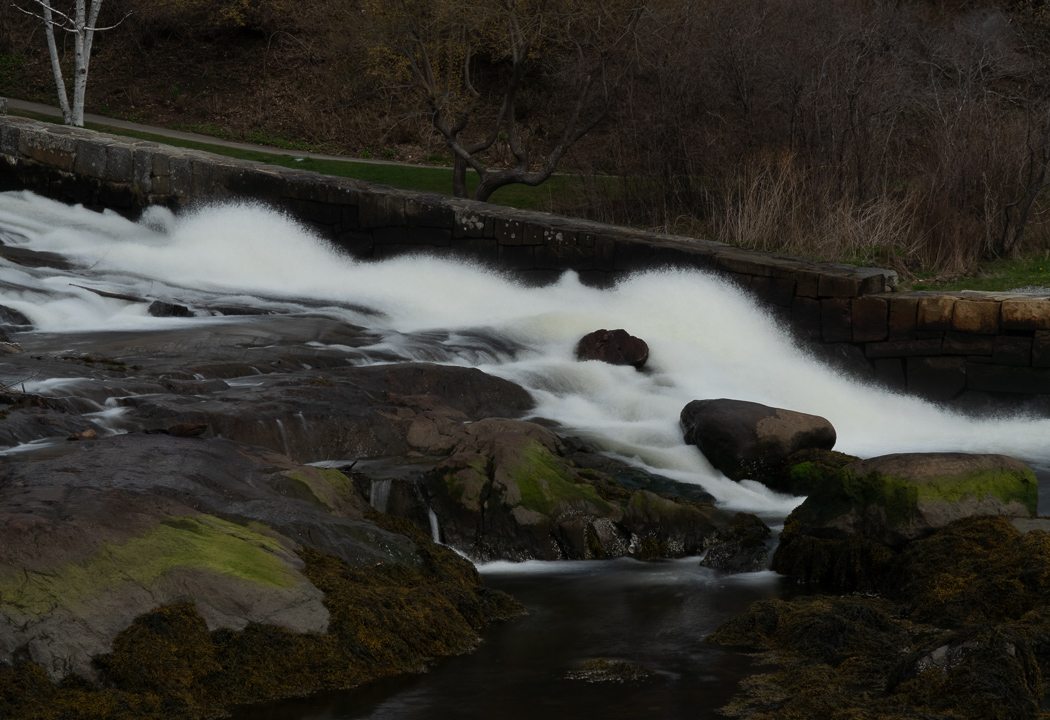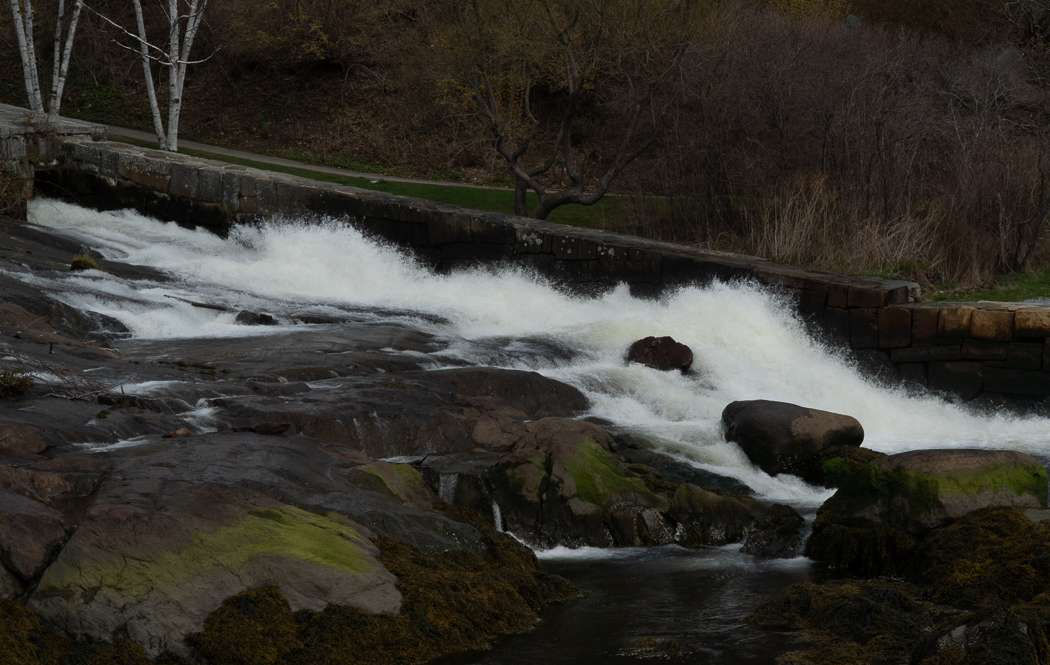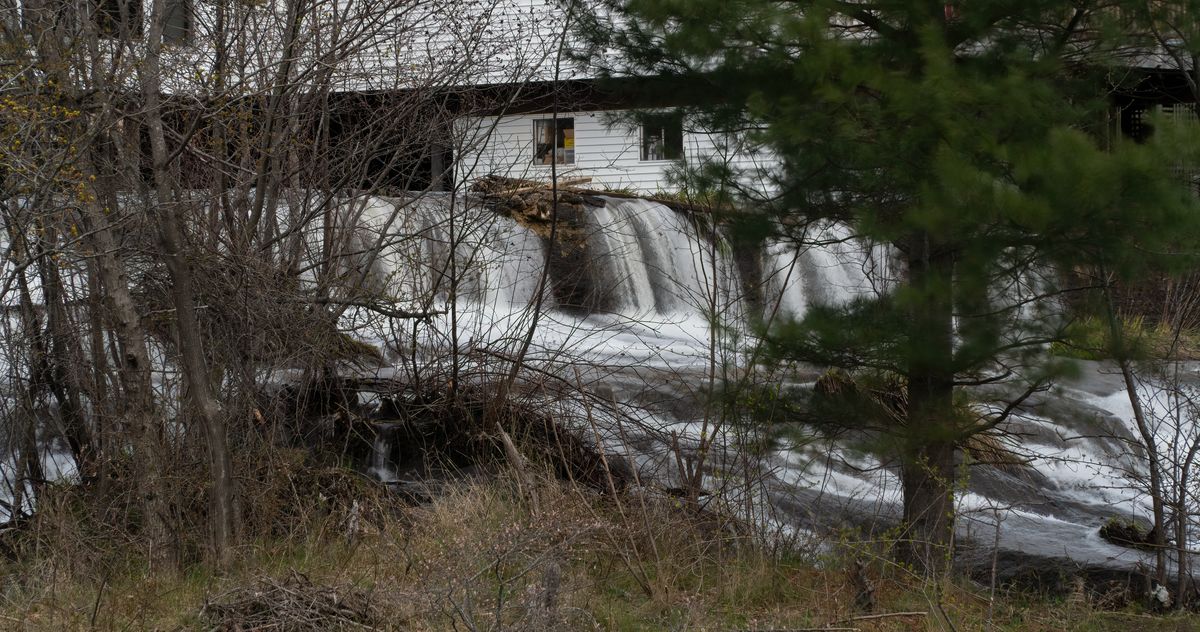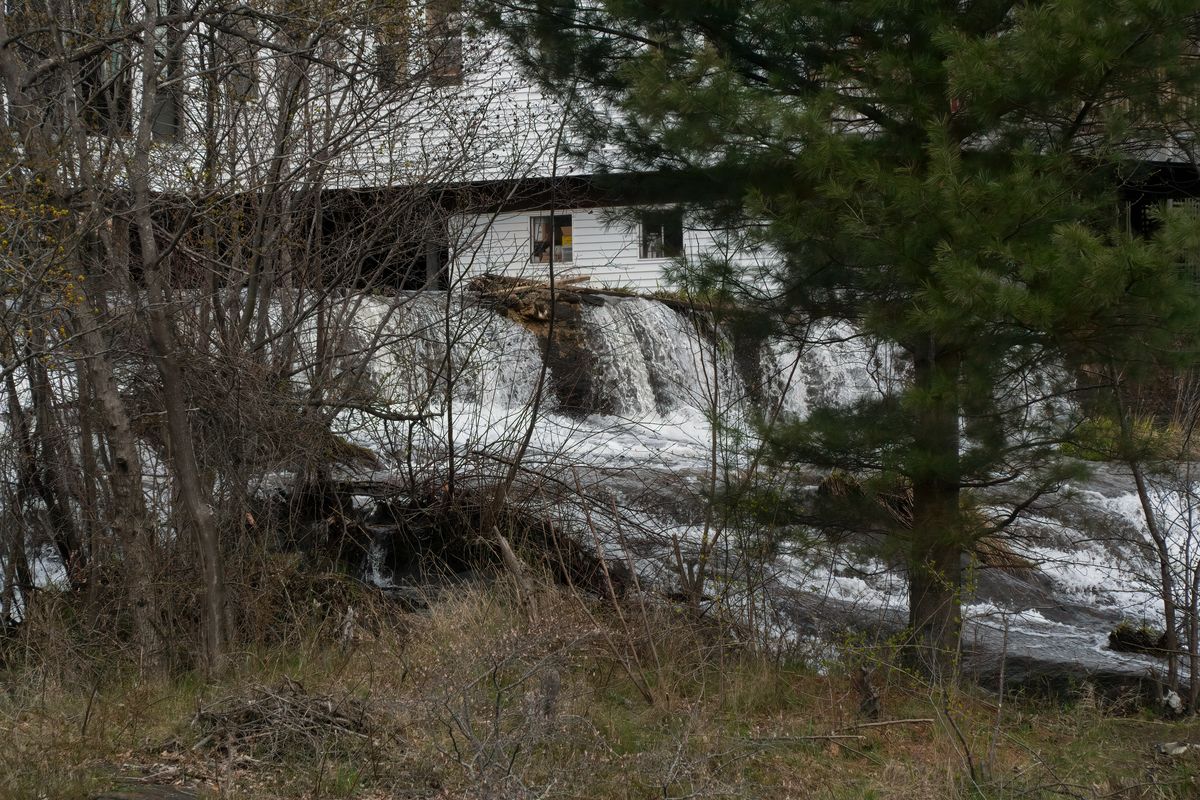Smooth Water meets Hand-held Camera
Apr 27, 2022 17:18:08 #
I do like photos I've seen with long exposures of a stream or waterfall and I have taken the time and effort to shoot a few. But somehow, locating the right ND filter, setting up a tripod, etc. just makes this a trick I don't pull out of my hat very often.
I had an idea recently and I got to try it out the other day. Instead of one long shot, why not take a series of shots and median-blend them in Photoshop? It works. Moreover, in PP you have the option of adjusting the number of shots to blend. Blending fewer shots seems to retain more detail and more shots gives you more smoothing of the water. The big bonus though is that you don't need any ND filters and you don't even need to use a tripod.
I had an idea recently and I got to try it out the other day. Instead of one long shot, why not take a series of shots and median-blend them in Photoshop? It works. Moreover, in PP you have the option of adjusting the number of shots to blend. Blending fewer shots seems to retain more detail and more shots gives you more smoothing of the water. The big bonus though is that you don't need any ND filters and you don't even need to use a tripod.
Apr 28, 2022 06:29:42 #
That’s a brilliant idea, especially for folk like me who are getting too old to carry a bag full of photojunk just in case you happen upon a scene that requires it.
Apr 28, 2022 08:19:44 #
magnetoman wrote:
That’s a brilliant idea, especially for folk like me who are getting too old to carry a bag full of photojunk just in case you happen upon a scene that requires it.
As it happened, I had all the junk I would need in my car for making a long exposure - a tripod and a couple ND filters. I would not mind carrying them just the few feet away for this particular shot (though at 77, I'd not like to carry all of that even a quarter-mile) but one other thing in the car would deter me. My wife was impatiently waiting and I would not want to keep her waiting for fifteen or twenty minutes while I got everything set up properly.
Apr 28, 2022 11:38:53 #
It's not a new idea and average blending can be used as well as median blending. I suspect that average blending will produce more smoothness from less exposures, but median blending will capture more of the structure and shape of the flowing water.
It's worth mentioning that you don't need a tripod as long as the shutter speed of each exposure is fast enough to counter camera shake and/or camera movement. The simplest method would be to use continuous shutter release.
It's worth mentioning that you don't need a tripod as long as the shutter speed of each exposure is fast enough to counter camera shake and/or camera movement. The simplest method would be to use continuous shutter release.
Apr 28, 2022 11:52:48 #
R.G. wrote:
It's not a new idea and average blending can be used as well as median blending. I suspect that average blending will produce more smoothness from less exposures, but median blending will capture more of the structure and shape of the flowing water.
It's worth mentioning that you don't need a tripod as long as the shutter speed of each exposure is fast enough to counter camera shake and/or camera movement. The simplest method would be to use continuous shutter release.
It's worth mentioning that you don't need a tripod as long as the shutter speed of each exposure is fast enough to counter camera shake and/or camera movement. The simplest method would be to use continuous shutter release.
It does not surprise me that I am not the first to think of this, but I'd not read or heard of this technique before aside from applications to astro-photography. I did try out using the mean but did not like the results which seemed overly blurred; no doubt there could be good results with some scenes but not with the ones I tried. With around 20 exposures I found the median blend to be overly smooth and cutting down to every other one I got a bit more structure. Perhaps if you only have three or four exposures to work with then the mean blend would come in handy.
Apr 28, 2022 12:04:39 #
It's also worth mentioning that multi-shot blending can be used to reduce noise. If light was low and hand-held was your only option, you could keep the shutter speed up by keeping the ISO up, in which case the blending would help eliminate the ISO noise.
Apr 28, 2022 12:06:57 #
aphelps
Loc: Central Ohio
R.G. wrote:
It's not a new idea and average blending can be used as well as median blending. I suspect that average blending will produce more smoothness from less exposures, but median blending will capture more of the structure and shape of the flowing water.
It's worth mentioning that you don't need a tripod as long as the shutter speed of each exposure is fast enough to counter camera shake and/or camera movement. The simplest method would be to use continuous shutter release.
It's worth mentioning that you don't need a tripod as long as the shutter speed of each exposure is fast enough to counter camera shake and/or camera movement. The simplest method would be to use continuous shutter release.
Please explain what median blending is and how to create it from a number of images? I understand median in statistics but having difficulty applying it to image blending. TIA.
Apr 28, 2022 12:16:56 #
aphelps wrote:
Please explain what median blending is and how to create it from a number of images? I understand median in statistics but having difficulty applying it to image blending. TIA.
Your photo editor has to have that option. Just doing a straight blend produces an average blend - each pixel in the resulting blend will have a value that is the average of all the values for that particular pixel in each of the exposures. Median blending is when values that are excessively different from the average value are discarded. It can be used to make moving things disappear. For example if someone or something moves across the scene as you acquire your multiple exposures, median blending will exclude all trace of it from the final image.
Apr 28, 2022 12:21:32 #
aphelps wrote:
Please explain what median blending is and how to create it from a number of images? I understand median in statistics but having difficulty applying it to image blending. TIA.
In PS, the trick is to put the images into layers, align them and then convert those layers into a smart object. In the layers menu under smart objects there is an option to merge the layers using median blend. The process is described (for noise reduction) at the end of a video at https://www.youtube.com/watch?v=rtEnTocLdbc, starting about 14 minutes into the video.
Median just means middle. Median blending looks at a particular pixel over all of the images being blended and takes the middle one.
Apr 28, 2022 12:22:50 #
Apr 28, 2022 14:02:59 #
aphelps
Loc: Central Ohio
R.G. wrote:
Your photo editor has to have that option. Just d... (show quote)
Thank you, that clears it up nicely!
Apr 28, 2022 15:15:51 #
Apr 28, 2022 18:10:19 #
R.G. wrote:
It's not a new idea and average blending can be used as well as median blending. I suspect that average blending will produce more smoothness from less exposures, but median blending will capture more of the structure and shape of the flowing water.
It's worth mentioning that you don't need a tripod as long as the shutter speed of each exposure is fast enough to counter camera shake and/or camera movement. The simplest method would be to use continuous shutter release.
It's worth mentioning that you don't need a tripod as long as the shutter speed of each exposure is fast enough to counter camera shake and/or camera movement. The simplest method would be to use continuous shutter release.
I located my sample images for comparing median blending with mean (average) blending. As I noted elsewhere, I was not particularly pleased with the results using the mean but both do work.
Average or mean blending

Median blending

Apr 29, 2022 13:06:46 #
Apr 30, 2022 17:38:33 #
I worked with a couple more images with this method today and it occurred to me that another advantage of this approach is that the resulting blend can easily be mixed with one of the constituent images, giving you good control over the amount of structure you might want to mix back in. I did this in the two images that are attached.
With the long exposure approach doing this in PP would be difficult and probably not even possible unless you had anticipated the need while shooting.
With the long exposure approach doing this in PP would be difficult and probably not even possible unless you had anticipated the need while shooting.


If you want to reply, then register here. Registration is free and your account is created instantly, so you can post right away.








